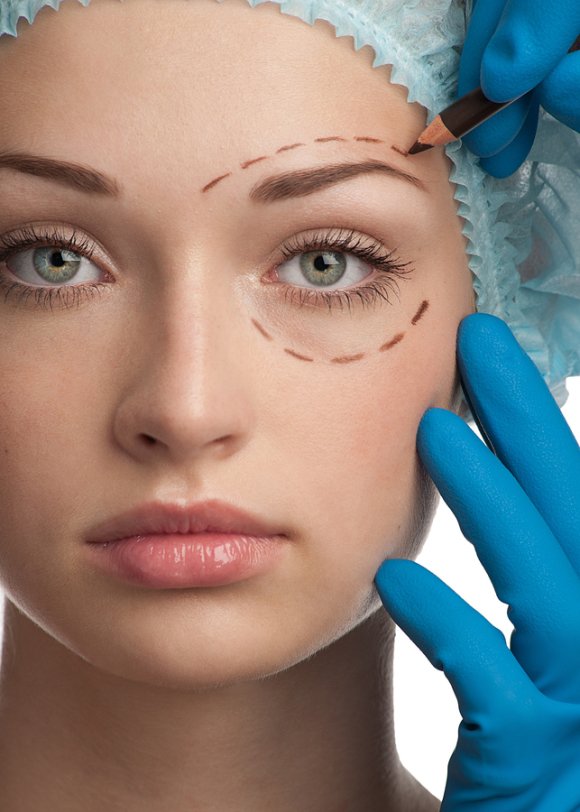-
Are You a Good Candidate for ThermiTight?
ThermiTight is a new technology used for treatment for skin laxity. This micro-invasive procedure is painless and requires little to no recovery time. Are you a good candidate for this plastic surgery near Manhattan? Here is what you need to know.
ThermiTight is a revolutionary alternative to liposuction and facelift surgeries. It uses radiofrequency technology to stimulate collagen production by heating subdermal tissue. As a result, skin is smoother, tighter, and more youthful, with fewer areas of cellulite. It can be used effectively on just about anywhere in the body including the face, neck, abdomen, breast, and arms. Because tumescent anesthesia is used, patients do not need general or twilight anesthesia, except by request. There is no downtime required and using sunscreen and mild soap are the only post-treatment care requirements.
ThermiTight could be the right procedure for you if you want to tighten areas of skin without the need for more invasive surgery. It is also ideal for patients who want results that last longer than dermal filler treatments or who need additional skin tightening after liposuction or CoolSculpting.

-
Treating Gynecomastia
Gynecomastia —persistent breast enlargement in males—can have profound emotional health impacts, especially for adolescent boys. Although gynecomastia isn’t generally a serious medical issue, it can have significant effects on self-esteem and emotional health. The good news for those living with gynecomastia in Manhattan is that help is available. With the right treatment, symptoms can be permanently resolved so patients can achieve a better quality of life.

Understanding Gynecomastia
Gynecomastia causes swollen breast tissue and breast tenderness and is triggered when testosterone levels fall in relation to estrogen. There are several things that can cause this hormone imbalance, including certain medications, street drugs, and medical conditions such as hyperthyroidism, kidney failure, malnutrition, and tumors. Any condition that interferes with the pituitary gland can cause gynecomastia, as can aging. Men who are overweight are more likely to suffer from this kind of hormone imbalance. Gynecomastia can happen at any age, including infancy, but it is most common during puberty and again between the ages of 50 and 80.
Finding the Right Treatment
In some cases, treating gynecomastia involves simply addressing the underlying condition. Treating thyroid disease or malnutrition, for instance, may cause the gynecomastia to resolve on its own. In other cases, using medications designed to treat breast cancer, such as tamoxifen, can help. That is because these medicines suppress estrogen production. For men with severe gynecomastia that doesn’t respond to non-invasive treatments, gynecomastia surgery could be the solution. Both liposuction and mastectomy are effective for gynecomastia patients. During liposuction, a plastic surgeon will remove excess fat in the breast area while leaving the breast gland tissue in tact. A mastectomy involves the removal of the breast gland tissue itself. Both procedures achieve the same results, and the right one for you depends on several factors, including the severity of your condition and your overall health. Meeting with a plastic surgeon will allow you to learn more about your condition and start determining the most appropriate treatment option.
-
Are You a Good Candidate for Eyelid Surgery?
One type of plastic surgery in Manhattan that is always in demand is eyelid surgery. Much like a facelift or liposuction, eyelid surgery—also called blepharoplasty—can dramatically change your appearance and help you retain a youthful look. However, as with all procedures, from liposuction to a Brazilian butt lift, it is not for everyone. How can you tell if eyelid surgery is the right procedure for you?
Eyelid surgery is ideal for people who have puffy and dark skin under their eyes, with or without wrinkling. It can also help correct loose skin hanging from the upper eyes that obscures vision or excess skin that hides the natural crease of the upper eye. Patients who have dry eyes or chronic medical conditions will need to be approved for surgery on a case-by-case basis. The best way to determine if eyelid surgery is right for you is to schedule an appointment with a plastic surgeon.

-
Fat Grafting for Facial Procedures
One facial change that contributes to skin aging is the loss of volume. As skin loses its plumpness, the sunken cheeks, creased skin, and thin lips left behind can leave you looking significantly older than you feel. Dermal fillers can address the issue of volume loss, but fat grafting offers a natural, long-lasting alternative. Fat grafting can be combined with liposuction in Manhattan to give patients the opportunity to contour their bodies while improving their facial compositions. If you are considering this plastic surgery procedure, here is what you need to know.

What Is Fat Grafting?
Fat grafting involves the transfer of fat from one area of the body to another. Fat is removed during liposuction and purified to be injected into the treatment area. For facial procedures, fat grafting can improve the look of wrinkles and plump up areas that have lost volume. It can also be used to correct acne scarring and other facial indentations. In addition to facial procedures, fat grafting can be used for breast augmentation, Brazilian butt lift procedures, and even hand rejuvenation.
What Are the Benefits?
Because fat grafting involves transferring fat from your own body, the risk of allergic reactions is much lower than with dermal fillers. The results also last longer than dermal fillers and don’t require the same amount of maintenance. Fat grafting allows patients to address two areas of concern in a single procedure. Liposuction removes areas of stubborn fat that don’t respond to diet and exercise, while grafting uses that fat in an area that is more desirable.
What Happens During the Procedure?
Your plastic surgeon will help you determine which areas to target for fat removal as well as which parts of your face should receive the fat grafts. During liposuction, unwanted fat is removed via small incisions. The fat is then purified and transferred to small syringes. Finally, the fat is injected into the parts of the face that require additional volume. Recovery times vary, depending on the extent of the liposuction. Most patients return to work within three weeks of the procedure.
RECENT POSTS
categories
- Uncategorized
- Patient Review
- RealSelf Review
- Infographic
- Liposuction
- SmartLipo
- Thermitight
- Breast Augmentation
- Breast Implants
- Dr. Elan Singer
- Yelp Review
- Plastic Surgery
- Tummy Tuck
- Mommy Makeover
- Cosmetic Surgery
- Breast Lift
- Gynecomastia
- Brazilian Butt Lift
- Breast Reduction
- Hyperhidrosis
- Abdominoplasty
- ThermiTight Benefits
- ThermiTight Procedure
- Mini Tummy Tuck
- Skin Tightening
- Body Contouring
- Excessive Sweating
- ThermiRF
- Eyelid Surgery
